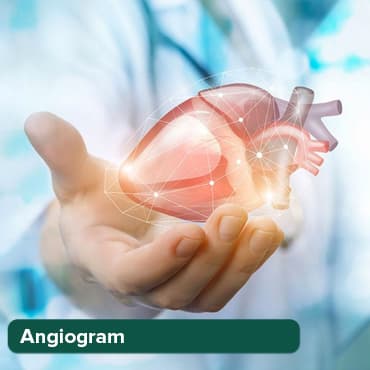
Detecting and Staging Testicular Cancer with PET Scans
17 May, 2023
Testicular cancer is a rare but treatable cancer that affects the testicles, the male reproductive organs responsible for sperm and testosterone production. In recent years, the use of his PET scans in the diagnosis and staging of testicular cancer has become more popular. This article reviews the use of PET scanning in the diagnosis and staging of testicular cancer.
What is a PET scan?
Transform Your Beauty, Boost Your Confidence
Find the right cosmetic procedure for your needs.

We specialize in a wide range of cosmetic procedures

PET stands for Positron Emission Tomography and is a type of imaging test that uses a small amount of radioactive material to create pictures inside the body. In a PET scan, the patient is injected with a small amount of radioactive material called a tracer. This tracer then travels throughout the body and accumulates in areas of high metabolic activity. B. Cancer cells. A PET scanner then detects the radioactive material and creates detailed pictures of the inside of your body.
PET scan to diagnose testicular cancer
Testicular cancer is usually diagnosed using a combination of physical examination, blood tests, and imaging tests. A PET scan is one of the imaging tests that can be used to diagnose testicular cancer. PET scans are often used to determine the stage of the cancer and its spread after testicular cancer has already been diagnosed. However, in some cases, a PET scan can also be used as part of the initial diagnostic workup.
Injects a patient with a radioactive tracer during his PET scan for testicular cancer. This tracer moves through the body and accumulates in areas of high metabolic activity. These areas include not only cancer cells in the testicles, but also other areas of the body where cancer has spread.
PET scanners then create detailed images of the inside of the body, helping doctors identify areas of abnormal activity that may indicate testicular cancer. PET scans are especially useful for detecting cancer that has spread to other parts of the body, such as lymph nodes, lungs, or liver.
PET scan for staging testicular cancer
Most popular procedures in India
Atrial septal defect
Upto 80% off
90% Rated
Satisfactory

Coronary Angiogram a
Upto 80% off
90% Rated
Satisfactory

Coronary Angiogram C
Upto 80% off
90% Rated
Satisfactory

Liver Transplant
Upto 80% off
90% Rated
Satisfactory

Total Hip Replacemen
Upto 80% off
90% Rated
Satisfactory

Once testicular cancer has been diagnosed; the next step is to determine the stage of the cancer. Staging is the process of determining how advanced the cancer is and how far it has spread.
PET scans are often used to stage testicular cancer because they help identify areas of the body where cancer has spread. This information is important in determining the most appropriate treatment plan for the patient. A PET scan helps doctors determine if cancer has spread to nearby lymph nodes or other organs, such as the lungs or liver. This information is used to assign a stage to the cancer, ranging from stage 1 (early stage) to stage 4 (advanced stage).
PET scans can also help monitor the progress of testicular cancer treatment. They help doctors determine whether the cancer has responded to treatment or whether it continues to grow or spread.
Benefits of PET Scans for Testicular Cancer
Using PET scans for the diagnosis and grading of testicular cancer has several advantages. These benefits are:
1. Accurate diagnosis:
A PET scan can help identify areas of abnormal activity that may indicate testicular cancer, even when other imaging tests are inconclusive.
2. Staging:
A PET scan can help determine the stage of testicular cancer and identify areas where the cancer has spread. This information is important in developing an appropriate treatment plan.
3. Treatment monitoring:
PET scans help monitor the progress of testicular cancer treatment and determine if the cancer has responded to treatment.
4. Minimal Risk:
PET scans are generally considered safe and have minimal risks, especially when compared to other imaging modalities that use high levels of radiation.
PET risks and side effects
As with any medical procedure, PET scans come with some risks and potential side effects. However, these risks are generally considered minimal, especially when compared to the potential benefits of using his PET scans in diagnosing and treating testicular cancer.
Potential risks and side effects of PET scans include:
1. Radiation exposure:
PET scans use a small amount of radioactive material and therefore expose the patient to a small amount of radiation. However, the amount of radiation used in PET scans is generally considered safe, and the risks of radiation exposure usually outweigh the potential benefits of the procedure.
2. Allergic reactions:
Some patients may have allergic reactions to the radiotracers used in PET scans. Symptoms of an allergic reaction include itching, hives, difficulty breathing, and swelling of the face, lips, tongue, and throat. However, these reactions are rare.
3. Discomfort or pain:
Some patients may experience discomfort or pain at the injection site where the radiotracer was administered. However, this discomfort is usually mild and temporary.
4. False Positives:
As with any imaging test, PET scans can give false-positive results. This means that the scan can show areas of abnormal activity that aren't actually cancer. In some cases, this can lead to unnecessary follow-up tests and treatments.
5. False negatives:
PET scans can also give false negative results. This means that active areas of cancer may not show up in the scan. This can occur when the cancer is in its early stages or when the cancer is not very metabolically active.
It's important to note that the benefits of using his PET scans to diagnose and treat testicular cancer typically outweigh the risks and potential side effects. Patients considering a PET scan should discuss the potential risks and benefits with their physician and make an informed decision whether to have a PET scan.
CONCLUSION
PET scanning is a powerful tool in the diagnosis and staging of testicular cancer. These scans help doctors identify areas of abnormal metabolic activity that may indicate cancer and help determine the stage of the cancer and whether it has spread to other parts of the body.
PET scans have some risks and potential side effects, but these risks are generally considered minimal. The benefits of using her PET scans to diagnose and treat testicular cancer usually outweigh the risks. Patients considering a PET scan should discuss the potential risks and benefits with their doctor and make an informed decision about whether to have surgery.
Wellness Treatment
Give yourself the time to relax
Lowest Prices Guaranteed!

Lowest Prices Guaranteed!




